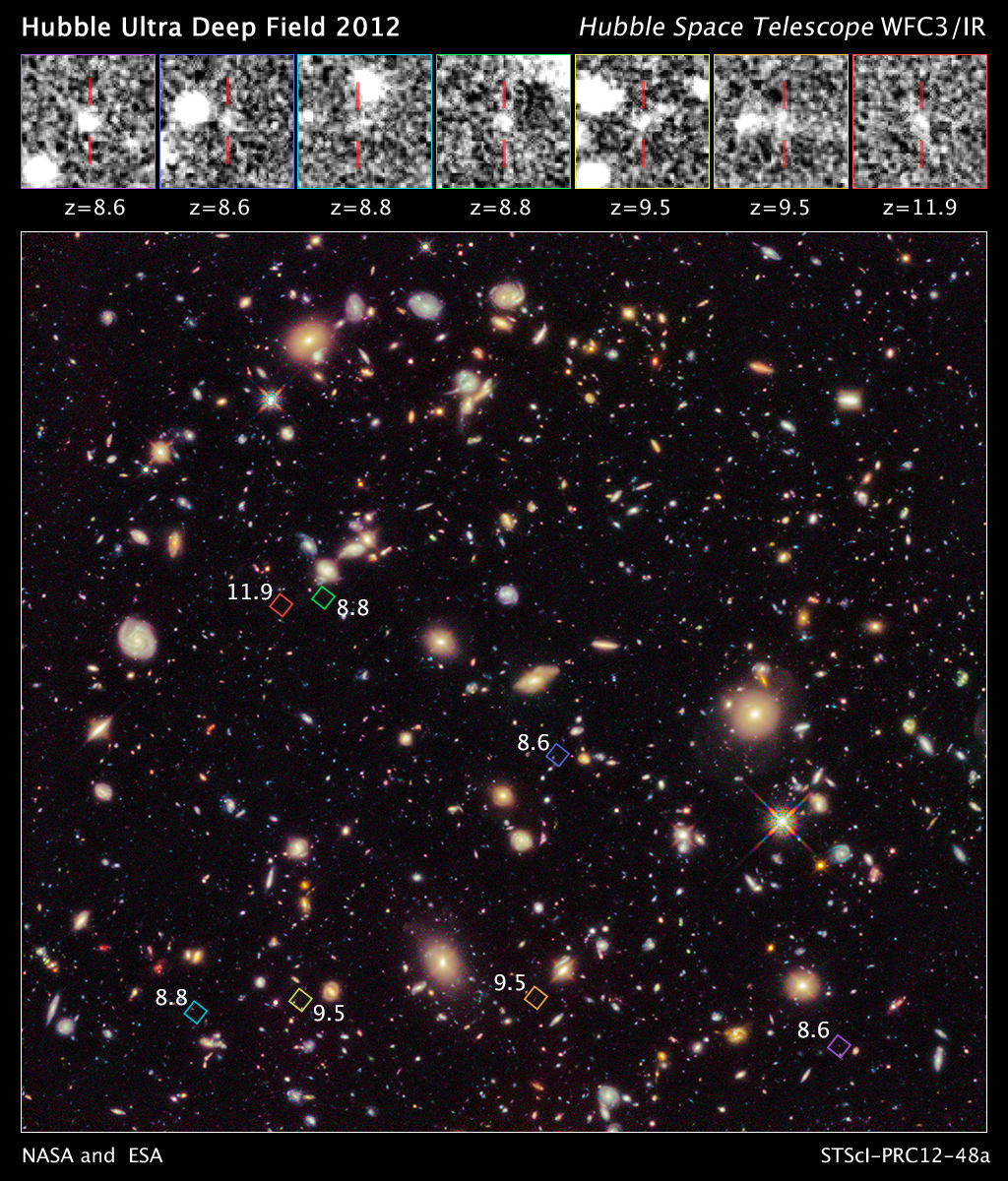
Astronomers have spotted seven galaxies that existed just a few hundred million years after the universe's birth, including one that may be the oldest found to date.
The potential record-holding galaxy, known as UDFj-39546284, likely existed when the universe was just 380 million years old, researchers said, and may be the farthest galaxy ever seen. The other six distant galaxies all formed within 600 million years of the Big Bang, which created our universe 13.7 billion years ago.
UDFj-39546284 was detected previously, and researchers had thought it formed just 500 million years or so after the Big Bang. The new observations, made using NASA's Hubble Space Telescope, push its probable formation time back even further.
The seven galaxies constitute the first reliable census of the epoch from 400 million to 600 million years after the universe's birth, researchers said. This census detects a steady increase in galaxies over this period, suggesting that the formation of the first stars and galaxies — the so-called "cosmic dawn" — happened gradually rather than suddenly.
"The cosmic dawn was probably not a single, dramatic event," study lead author Richard Ellis, of Caltech in Pasadena, told reporters today (Dec. 12). [Gallery: Spectacular Hubble Photos]
Ellis and his team pointed Hubble at a small patch of sky known as the Hubble Ultra Deep Field, which the telescope observed for many hours to build up enough light to spot extremely faint, distant objects. The researchers used Hubble's Wide Field Camera 3 to study the deep field in near-infrared wavelengths during August and September 2012.
The astronomers used special filters to measure the galaxies' redshifts — how much their light has been stretched by the expansion of space. From the redshifts, the researchers were able to calculate the distance to each galaxy, revealing their ages.
Get the Space.com Newsletter
Breaking space news, the latest updates on rocket launches, skywatching events and more!
The results "reprensent our cosmic roots," said Harvard astronomer Abraham Loeb, who was not involved in the study. The new Hubble data "comes from the biggest archeological dig that we have of the universe."
The team pushed Hubble to its limits, and the telescope probably won't be able to see back in time any further, Ellis said. But NASA's James Webb Space Telescope, which is slated to launch in 2018, will dig even deeper into the universe's past.
"Hubble has, in a sense, set the stage for Webb," team member Anton Koekemoer, of the Space Telescope Science Institute in Baltimore, said in a statement. "Our work indicates there is a rich field of even earlier galaxies that Webb will be able to study."
The new study has been accepted for publication in The Astrophysical Journal Letters.
Follow SPACE.com senior writer Mike Wall on Twitter @michaeldwall or SPACE.com @Spacedotcom. We're also on Facebook and Google+.
Join our Space Forums to keep talking space on the latest missions, night sky and more! And if you have a news tip, correction or comment, let us know at: community@space.com.

Michael Wall is a Senior Space Writer with Space.com and joined the team in 2010. He primarily covers exoplanets, spaceflight and military space, but has been known to dabble in the space art beat. His book about the search for alien life, "Out There," was published on Nov. 13, 2018. Before becoming a science writer, Michael worked as a herpetologist and wildlife biologist. He has a Ph.D. in evolutionary biology from the University of Sydney, Australia, a bachelor's degree from the University of Arizona, and a graduate certificate in science writing from the University of California, Santa Cruz. To find out what his latest project is, you can follow Michael on Twitter.